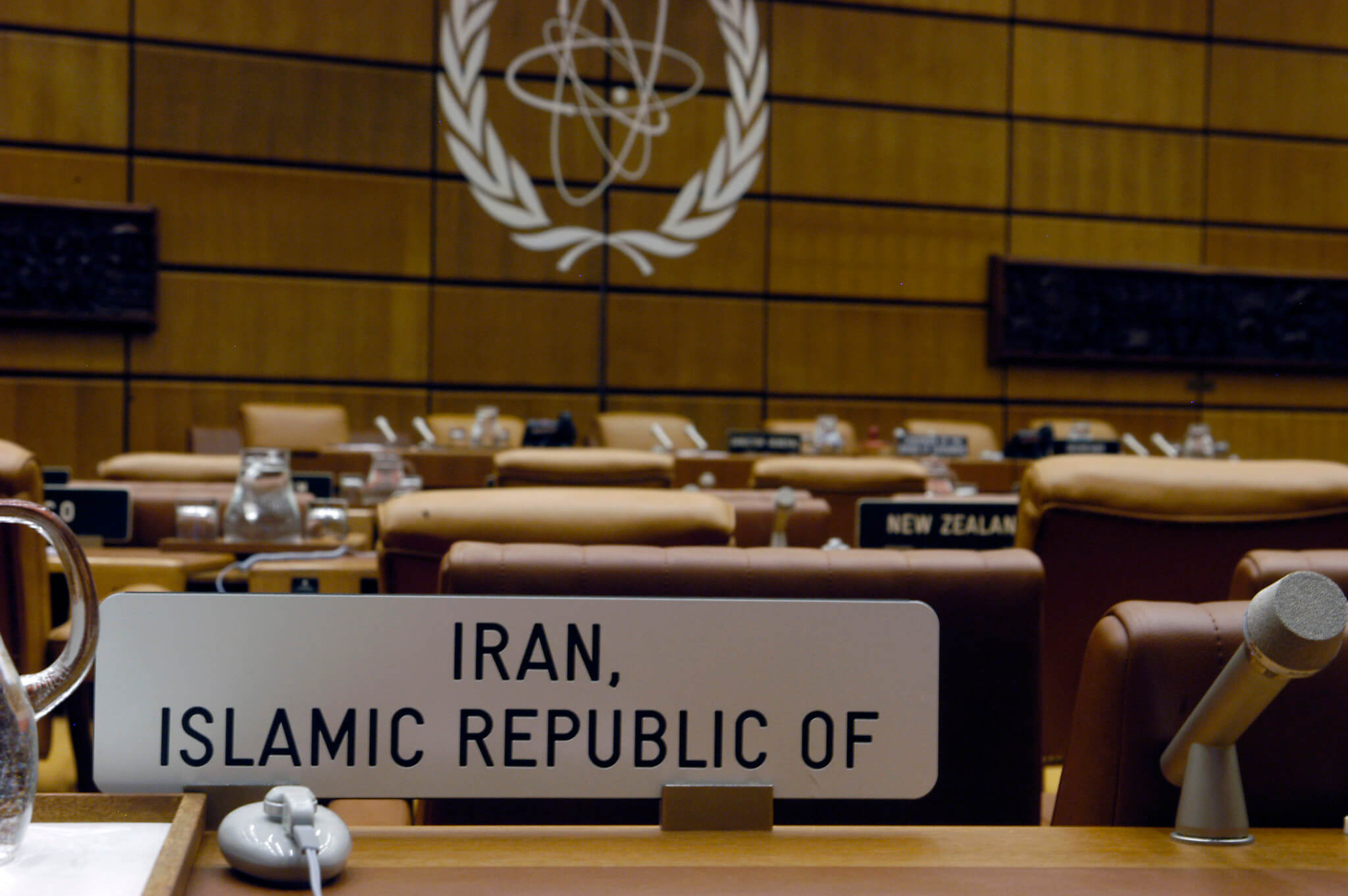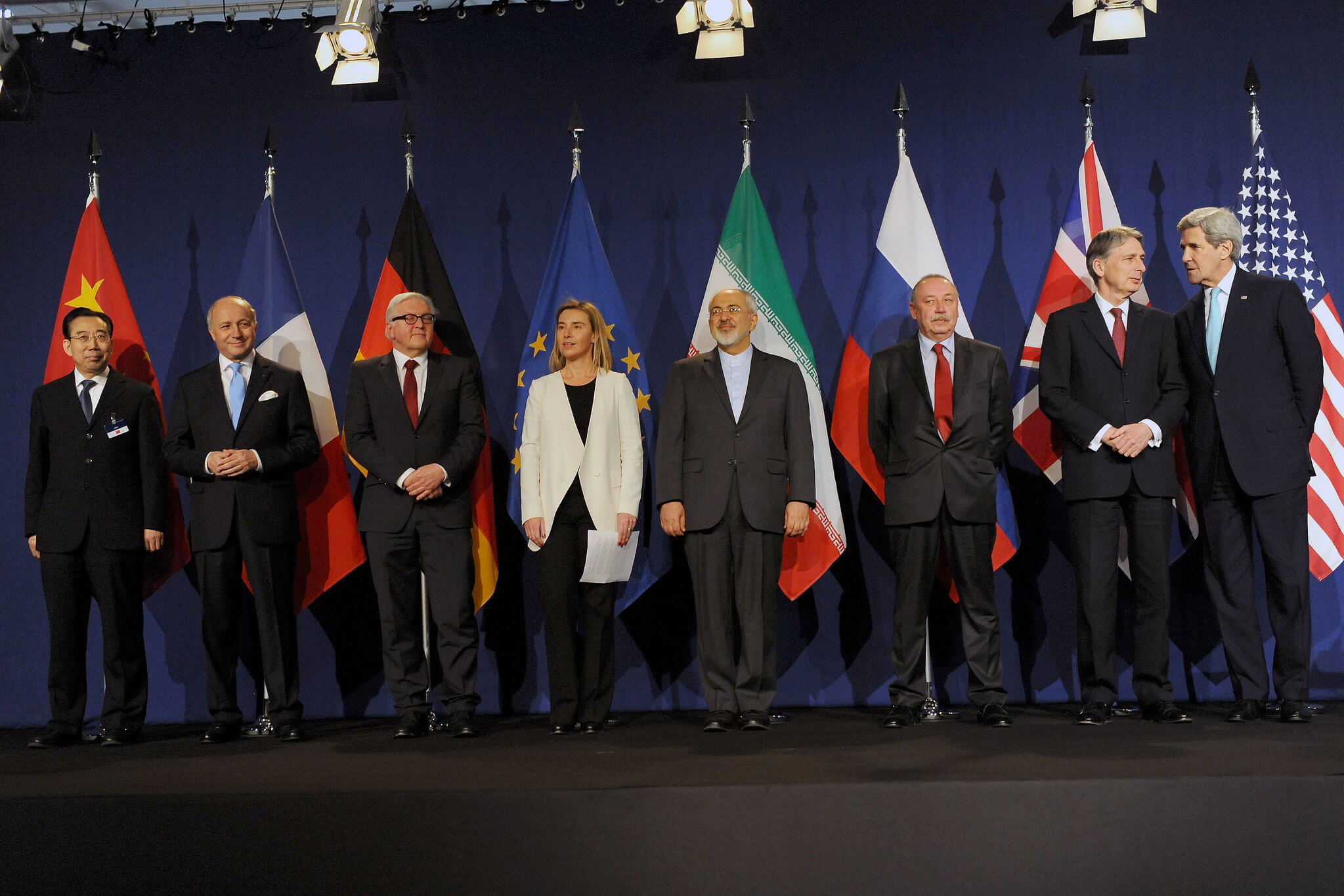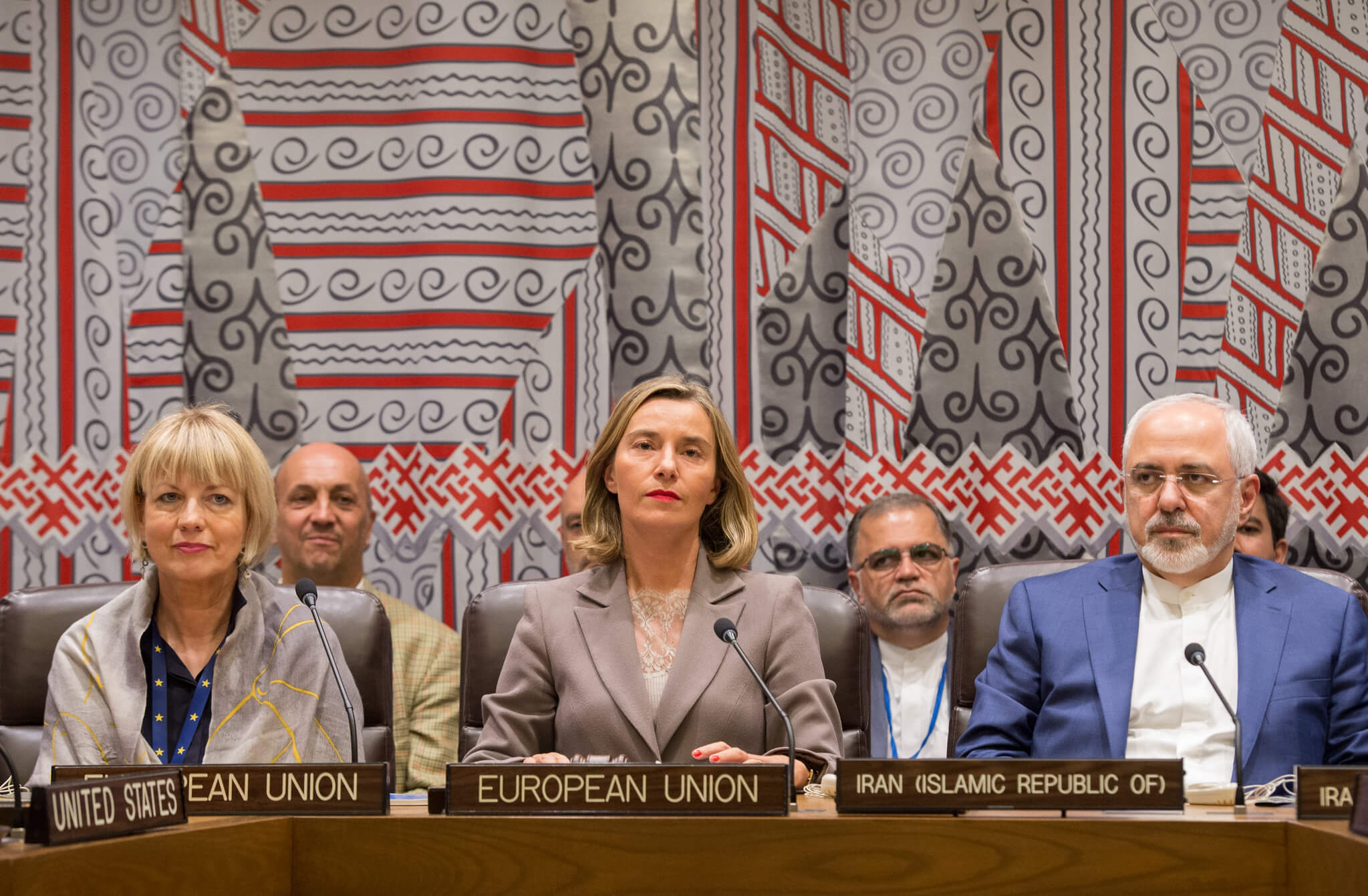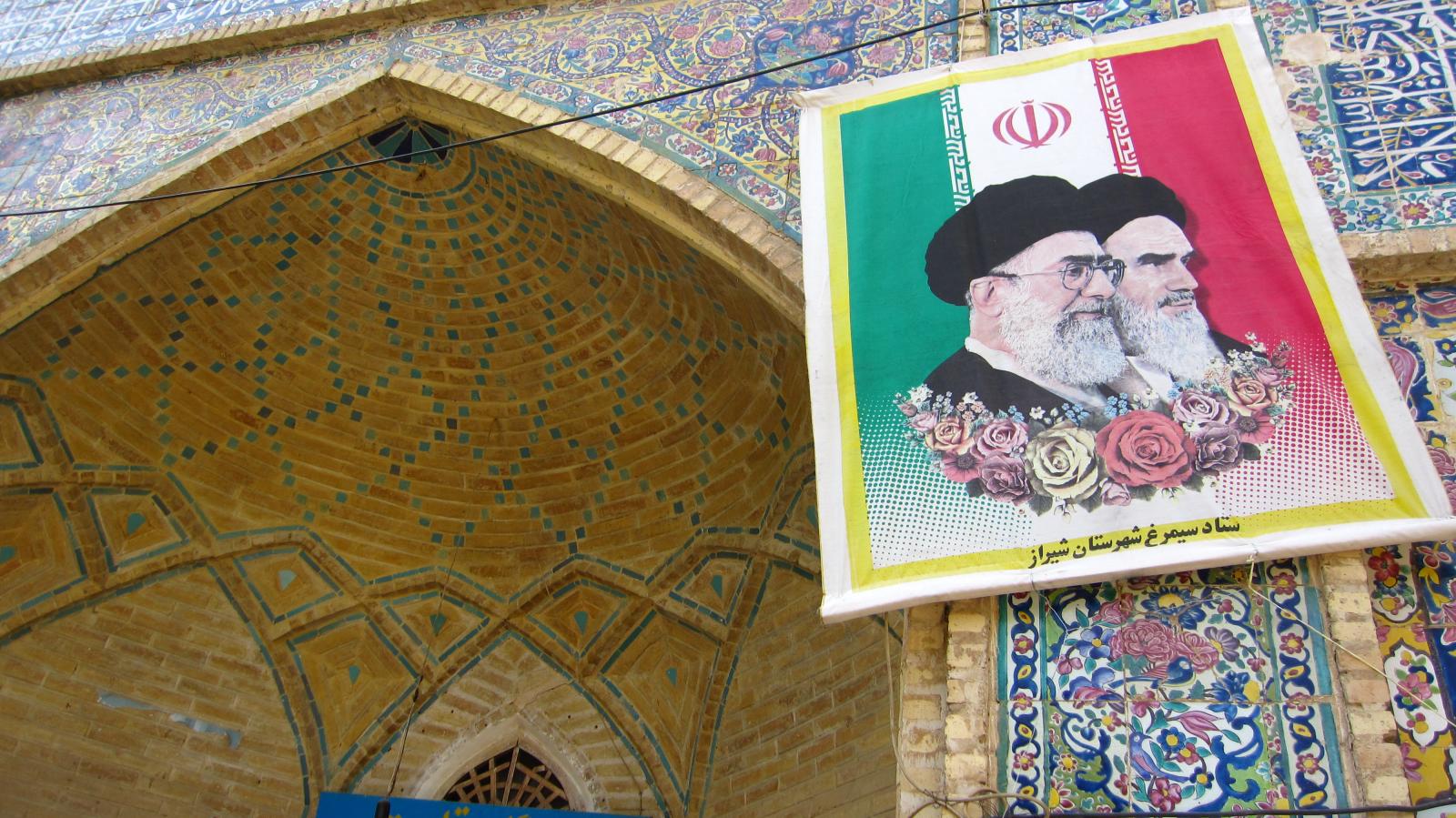Arms control in Iran: preventing a full-blown nuclear crisis
The 2015 Iran nuclear deal (JCPOA) has eroded to a point where the return of the crisis seems imminent. The fourth episode of the Clingendael Spectator series on arms control highlights the continuing importance of the JCPOA for both nuclear non-proliferation and regional security. Worst-case scenarios can be avoided as there is still a chance to prevent a relapse to a full-blown nuclear crisis.
The 2015 Iran nuclear agreement appeared to resolve the international crisis over Iran’s nuclear programme. However, the agreement, officially the Joint Comprehensive Plan of Action (JCPOA), has now eroded to a point where the return of the crisis seems imminent.
One year after the United States’ departure from the JCPOA and its subsequent re-imposition of sanctions on Iran, in May 2019 Iran began to reduce its commitments under the agreement, having stopped observing its operational limits by January 2020. Some US officials have been quick to portray Iran’s actions as confirmation of its continuing secret nuclear weapon ambitions – an argument that was the main rationale for their opposition to the JCPOA in the first place.
This article warns about the dangers of that potentially self-fulfilling prophesy, recalling the role that bilateral US-Iranian conflict dynamics and mistrust played in the pre-2013 nuclear crisis, and highlighting the continuing importance of the JCPOA for both nuclear non-proliferation and regional security. In addition to calling for renewed European efforts to safeguard the JCPOA, the article stresses the need for regional actors to take more responsibility for reducing tensions and promoting arms control in the Middle East.
The pre-2013 Iran nuclear crisis
The JCPOA was preceded by a seemingly intractable crisis, lasting over a decade, over Iran’s nuclear programme. The crisis began in 2002 with news of undeclared nuclear activities in Iran, but subsequently centred on a dispute over the country’s right to uranium enrichment.
The US maintained that the Iranian regime could not be trusted to enrich uranium, as this was a pathway to developing nuclear weapons. While US suspicions focused on the nature of the Iranian government and its clandestine nuclear activities, Iran argued that its past experience of having been excluded from the international nuclear energy market – based on the previous US policy of seeking to prevent the Islamic Republic from having any kind of a nuclear programme – had highlighted the need for an indigenous enrichment capability.1

The Iranian perception at the time was that the US was interested in regime change, rather than dispute resolution. This view had been enforced by the Bush administration’s policy of labelling Iran as part of the “axis of evil”, as well as its preference to pursue UN Security Council sanctions on the country over exploring diplomatic opportunities in 2003 and 2004.2
Iran’s defiance of UN resolutions led to an accumulation of both UN-based international sanctions and unilateral US and European sanctions
By late 2006, the US demand for Iran to cease all enrichment-related activities had been endorsed by the rest of the so-called P5+1 group that was in charge of nuclear negotiations with Iran, that is, the other four permanent UN Security Council members – China, France, Russia and the United Kingdom – plus Germany.
That demand was subsequently codified into several UN Security Council resolutions. Iran’s defiance of those resolutions led to an accumulation of both UN-based international sanctions and unilateral US and European sanctions in the following years. Iran significantly expanded its nuclear programme during this time.
With hardening positions on both sides, there seemed to be no diplomatic exit from the crisis, which risked turning into a military confrontation with Israeli, UK and US threats to conduct a preventive strike against Iran’s nuclear facilities. While intended to prevent nuclear proliferation by Iran, such threats risked having the opposite effect by highlighting the need for a powerful deterrent in Iran.

JCPOA: the result of compromise diplomacy
The Obama administration finally broke the diplomatic impasse by exploring a compromise solution in secret negotiations with Iran in 2012 and 2013.3
This allowed the two countries to step out from the politicized nuclear dispute and to test each other’s intentions: if Iran valued uranium enrichment for other than military reasons, and if the US prioritized non-proliferation over regime change, a mutually acceptable solution could be within reach.
Apart from being a success in multilateral arms control, the JCPOA was also a result of US-Iranian trust-building
As a result, the Iranian and US foreign ministers drafted a preliminary compromise agreement, whereby Iran was allowed to continue uranium enrichment under strict limits and verification, in exchange for sanctions relief.4
Since November 2013, the draft was discussed in formal negotiations involving the rest of the P5+1, leading to the conclusion of the JCPOA less than two years later. This was a major diplomatic achievement; as noted by Yukia Amano, the late secretary-general of the International Atomic Energy Agency (IAEA), the JCPOA is ‘the most robust verification system in existence anywhere in the world’.5
Apart from being a success in multilateral arms control, the JCPOA was thus also a result of US-Iranian trust-building, as well as a tool of bilateral conflict management between the two countries. In addition to the compromise regarding uranium enrichment, this conflict management approach was based on a compartmentalization of issues; other grievances, such as disagreements about Iran’s regional policies, were put aside with the expectation that they could be tackled later based on the trust created by JCPOA implementation.
Failure of bilateral conflict management, erosion of the JCPOA
Already before its formal withdrawal from the JCPOA, the Trump administration vocally rejected the logic of incremental conflict management with Iran, viewing the agreement as ‘appeasement’.6
Instead, it reverted back to the previous coercive approach based on maximalist goals, demanding Iran to end all of its uranium enrichment activities, to halt missile development, and change its ‘malign behaviour’ both regionally and domestically.7
As Brian Hook, the US Special Representative for Iran, explained, ‘[t]he only language they [Iran] understand is the language of isolation and economic pressure’, hence changes in Iran’s missile program, regional policies or other issues could not be achieved by ‘talking nicely’.8 The Trump administration’s “maximum pressure” policy on Iran has included unprecedented measures, notably extraterritorial sanctions, which have banned all oil exports from the country.
This policy has effectively prevented other JCPOA parties from meeting previous expectations regarding their respective commitments; by making most international transactions with Iran punishable, or inherently risky due to uncertainty about the application of US Treasury’s penalties, the measures have contributed to a deep economic crisis in Iran.9

Reminiscent of the pre-2013 crisis dynamics, Iran’s response to the coercive approach of the US has been resistance. Responding in particular to the EU’s inability to counter the US sanctions – as well as the US decision to revoke all remaining waivers on Iranian oil exports six days earlier – on 8 May 2019, Iran announced that it would gradually reduce its commitments under the agreement.
By early January 2020, it had stopped observing the JCPOA’s operational limits, including the caps on its stockpile of enriched uranium and limits on Research and Development (R&D) on new types of uranium enrichment centrifuges.10
The collapse of the JCPOA can be expected to lead to a further deterioration of regional security in the Middle East
The E3 – that is, France, Germany and the UK –responded to the Iranian actions by announcing they would trigger a JCPOA dispute resolution mechanism, which could lead to the re-imposition of previous UN sanctions that were lifted as part of the agreement. Iran has said that it might respond to a UN Security Council referral by withdrawing, not only from the JCPOA, but also from the 1968 Nuclear Non-Proliferation Treaty (NPT).11
At the same time, the economic difficulties and disillusionment with the JCPOA within Iran have created increasing domestic pressure to withdraw from the JCPOA, and led to criticism towards President Hassan Rouhani’s moderate foreign policy more generally.12 In this context, the Iranian supreme leader Ali Khamenei has warned against any further talks with the US, viewing its withdrawal from the JCPOA as ‘clear proof that America cannot be trusted’.13
Therefore, while some still believe that the coercive approach can lead to an Iranian capitulation or even a regime change in the country, a more likely result is a more recalcitrant Iranian foreign policy that is hardly conducive to any negotiations with the west.
The Iran nuclear deal and regional security
The erosion of the JCPOA coincided with increasing tensions in the Persian Gulf in 2019. Although Iran eventually did not carry out its previous threat to close the Strait of Hormuz in response to US oil sanctions, it was widely believed to be behind attacks against oil tankers in the Persian Gulf and the Gulf of Oman in May and June, and against Saudi Arabian oil processing facilities in September 2019.14
Moreover, having been narrowly avoided in June, a direct US-Iranian confrontation took place on Iraqi soil in January 2020, as Iran responded to the assassination of Iran’s military commander Qassem Soleimani, by firing missiles at US military bases in Iraq.15 16
The collapse of the JCPOA can be expected to lead to a further deterioration of regional security in the Middle East. A new nuclear crisis with Iran would likely bring back Israeli threats of preventive military action against Iran’s nuclear facilities.17
The road ahead seems determined by US-Iranian conflict dynamics and paved with worst-case assumptions that could lead to worst-case scenarios
Although the Iranian leadership has issued a religious fatwa against nuclear weapons and thus far opted against developing them, an imminent threat of military attack could eventually push the country to cross the nuclear threshold, especially if it deemed that its conventional missiles were not sufficient to deter such attacks. The recent domestic power shift in Iran could also contribute to such a decision by empowering the country’s most militaristic hard-liners.

An unconstrained Iranian nuclear programme is also likely to accelerate regional proliferation dynamics. Saudi Arabia – which plans to build 16 nuclear reactors by 2040 – has vowed to develop its own fuel cycle, and possibly even nuclear weapons, in response to Iran’s nuclear capability.18 In addition to Saudi Arabia’s stated readiness for nuclear proliferation, a particular concern here is the lack of IAEA inspections in the country, which has not implemented its Comprehensive Safeguards Agreement with the Agency.19
Paradoxically, even though they seem to be most affected by the erosion of the JCPOA, both Israel and Saudi Arabia have opposed the agreement.20 This is arguably because, more than nuclear proliferation by Iran, they felt threatened by US-Iranian rapprochement and Iran’s rising influence in the region.
Such perceptions can be seen to explain the general lack of appreciation of the positive effects of the JCPOA on regional security. They arguably also influenced the Trump administration’s view that the JCPOA had emboldened Iran’s attempts at regional hegemony.
Diplomatic exits for Iran and external powers
The failure of the US-Iranian conflict management process not only led to the erosion of the nuclear agreement, but it also undermined the foundation of trust that could have enabled further diplomatic steps between Iran, the US and the rest of the JCPOA parties. Instead, the road ahead seems once again determined by US-Iranian conflict dynamics and paved with worst-case assumptions that could lead to worst-case scenarios.
However, there is still a chance to prevent a relapse to a full-blown nuclear crisis. The most obvious solution would be for the US to lift the current sanctions, notably those on Iran’s oil sector, in exchange for an Iranian return to full compliance with the JCPOA. While such a shift is unlikely under the Trump administration, it might take place after the 2020 US presidential election, as the Democratic contenders have expressed their intent to re-join the agreement.21
Europe can play an important role in limiting the damage
In the absence of a change in the Iran policy of the US, Europe can play an important role in limiting the damage. Although European countries have been unable to counter US sanctions, they can still alleviate their negative impact, notably by expanding the volume of trade under the Instrument in Support of Trade Exchanges (INSTEX) and the Swiss channel facilitating imports of humanitarian goods to Iran.22 The E3 should also refrain from accelerating JCPOA’s demise by preventing a referral of the compliance dispute to the UN Security Council, and by promoting de-escalation between Iran and the US.
Need for regional solutions
The current situation has highlighted the vulnerability of the JCPOA, and any potential future agreements between Iran and extra-regional powers, to US-Iranian conflict dynamics. Particularly in light of the negative effects of the JCPOA’s erosion on security in the Gulf, this can be seen to point to the need for Middle Eastern actors to take more responsibility for promoting cooperative security and arms control in the region.
While Israel and Arab countries were not part of the JCPOA, their poor relations with Iran arguably contributed to the demise of the agreement. Improved relations among regional actors, in contrast, could help preserve the JCPOA by making it politically easier for the US to lift sanctions on Iran.

While any efforts towards regional cooperation in the Middle East are subject to a considerable degree of uncertainty, there are currently two emerging processes that could advance such cooperation.
First, in 2019, there were reports of a back-channel exploration for Gulf security dialogue, which seems to have been driven by an interest in preventing a region-wide military conflict following the incidents in 2019.23
Second, the first Conference on the Establishment of a Middle East Zone Free of Nuclear Weapons and Other Weapons of Mass Destruction was held at the United Nations in November 2019. While the WMD-free zone conferences could contribute a stronger sense of shared interest in nuclear arms control across the region, a Gulf security dialogue could reduce tensions between Iran and Arab countries, notably Saudi Arabia and the UAE.
The Gulf dialogue, were it to move forward, might also allow participants to explore previous proposals for Arab-Iranian cooperation on the peaceful uses of nuclear energy. This could help fill in the gaps in the regional non-proliferation architecture, which would be all the more important if the JCPOA collapses.
Regional dialogue, rather than negotiations between Iran and external powers, would also be more suitable for discussions on Iran’s missile programme and its regional policies, along with other problems related to insecurity and militarization in the region.
- 1See e.g. Javad Zarif, ‘Tackling the Iran-US Crisis: Need for a Paradigm Shift’, Journal of International Affairs 60/2 (Spring-Summer 2007), pp. 73-94.
- 2Tytti Erästö, ’Learning from the past in the Iranian nuclear dispute’, Middle East Research and Information Project, 16 April 2014.
- 3Laura Rozen, ‘Inside the secret US-Iran diplomacy that sealed nuke deal’, Al-Monitor, 11 August 2015.
- 4Trita Parsi, Losing an enemy: Obama, Iran, and the triumph of diplomacy, New Haven & London: Yale University Press, 2017, pp. 225-235.
- 5Yukia Amano, ‘Speech on Iran, the JCPOA and the IAEA’ at the Belfer Center for Science and International Affairs, Harvard Kennedy School, 14 November 2017.
- 6US Department of State, ‘Secretary Michael R. Pompeo With George Stephanopoulos of ABC This Week’ Interview with Michel R. Pompeo, 5 January 2020.
- 7US Department of State, ‘After the Deal: A New Iran Strategy’, Speech by Michael R. Pompeo, 21 May 2018.
- 8Council on Foreign Relations, ‘A Conversation with Brian Hook’, 12 December 2019.
- 9Golnaz Esfandiari, ‘Iran Had A Rough Year - And 2020 Is Likely To Be Equally Difficult’, Radio Free Europe, 1 January 2020.
- 10PressTV, ‘Iran announces decision to take fifth step to scale back JCPOA commitments’, 5 January 2020.
- 11Babak Dehghanpisheh, ‘Iran says it will quit global nuclear treaty if case goes to U.N’, Reuters, 20 January 2020.
- 12A. Tabatabai, ‘The hardliner’s renaissance: Iran’s pendulum politics are in full swing’, Responsible Statecraft, 10 March 2020.
- 13Parisa Hafezi, ‘Iran's Khamenei rejects Trump offer of talks, chides government over economy’, Reuters, 13 August 2018.
- 14See D. M. Halbfinger, ‘Mossad chief bluntly blames Iran for tanker attacks’, New York Times, 1 July 2019; and M. Georgy, ‘Special report: “Time to take out our swords”: Inside Iran’s plot to attack Saudi Arabia’, Reuters, 25 November 2019.
- 15See e.g. M.D. Shear et al., ‘Strikes on Iran approved by Trump, then abruptly pulled back’, New York Times, 20 June 2019.
- 16A.J. Rubin et al., ‘Iran fires on US forces at 2 bases in Iraq, calling it “fierce revenge”’, New York Times, 7 January 2020; and M. Safi, ‘Iran admits it fired two missiles at Ukrainian passenger jet’, The Guardian, 21 January 2020.
- 17See Z. Shalom and J.A. Collier, ‘Is Israel heading towards a “preventive war” against Iran?’, The National Interest, 23 November 2019.
- 18N. Schepers, ‘Q&A: Understanding Saudi Arabia’s nuclear energy programme’, International Institute for Strategic Studies, 30 April 2019; and T. Gardner, ‘US lawmakers press for oversight of any Saudi nuclear deal’, Reuters, 28 February 2019
- 19 ‘Before Saudis go nuclear, they may have to follow Iran’s lead’, Bourse & Bazaar, 7 March 2019.
- 20See A. Kaplan, ‘Top brass vs Netanyahu’s government: where Israel stands on nixing nuke Iran deal’, Haaretz, 8 May 2018; and ‘Kingdom of Saudi Arabia’s Statement on the United States Withdrawal from the JCPOA’, Embassy of the Kingdom of Saudi Arabia, Washington, DC, 8 May 2018.
- 21Council on Foreign Relations, ‘The Presidential Candidates on the Iran Nuclear Deal’, July 30, 2019.
- 22E. Batmanghelidj and S. Shah, ‘Europe still needs INSTEX to help solve the Iran crisis’, European Leadership Network, Commentary, 25 Feb. 2020; and BBC News, ’Swiss humanitarian channel to Iran launches with medical shipments’, 30 January 2020.
- 23Seyed Hossein Mousavian, ‘Is it time for a historic paradigm shift in the Persian Gulf?’, Al-Monitor, 8 November 2019; and Mustafa Abu Sneineh and Simon Hooper, ‘Exclusive: Saudi Arabia gives “green light” for talks with Iran’, Middle East Eye, 1 October 2019.






0 Reacties
Reactie toevoegen